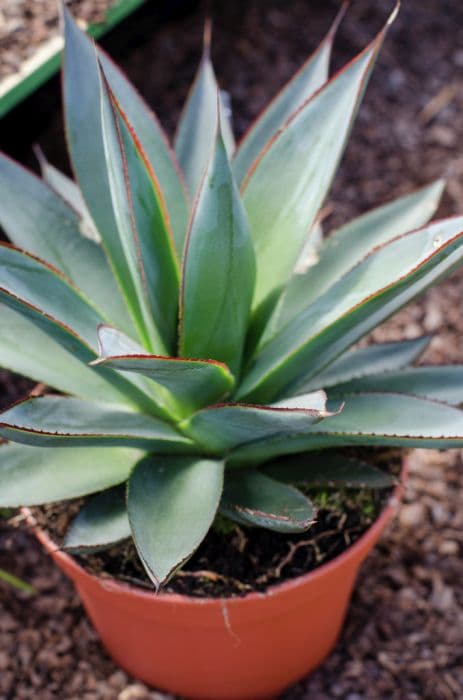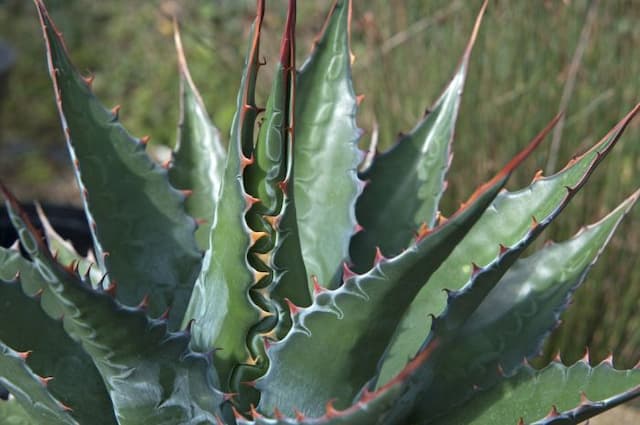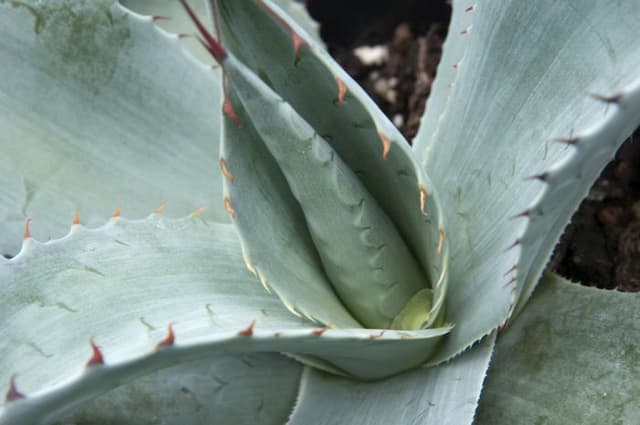Plantain Lily Hosta 'Zounds'

ABOUT
Hosta 'Zounds' is known for its stunning foliage, which displays large, heart-shaped leaves. The leaves are notable for their vibrant, chartreuse to golden-yellow color, which often creates a striking contrast when planted among other garden greens. The texture of 'Zounds' leaves is also distinct, as they exhibit a heavily corrugated surface that gives them a tactile, almost quilted appearance. Each leaf is edged with deep veins that add to the visual depth of its textured surface. In mid to late summer, Hosta 'Zounds' produces tall stalks that tower above the foliage, adorned with lavender flowers that are shaped like trumpets or bells depending on your perspective. The blossoms add a delicate and subtle ornamental touch to the plant, providing both visual and aromatic appeal to gardens. The combination of its dramatic foliage and dainty blooms makes Hosta 'Zounds' a popular choice for gardeners seeking to add a splash of color and a textural element to their shade gardens.
About this plant
 Names
NamesFamily
Asparagaceae
Synonyms
Plantain Lily, Funkia
Common names
Hosta 'Zounds'
 Toxicity
ToxicityTo humans
Hostas, including the Hosta 'Zounds', are generally not considered toxic to humans. These plants are commonly grown for ornamental purposes, and there are no significant reports of poisoning or serious health effects from consuming them. However, as with any non-food plant, ingesting parts of the plant may cause some discomfort such as nausea or upset stomach due to the plant's natural compounds.
To pets
Hostas, including the Hosta 'Zounds', are known to be toxic to pets, especially dogs and cats. If a pet ingests a part of a hosta plant, it could lead to symptoms of poisoning. The symptoms of hosta poisoning in pets can include vomiting, diarrhea, and depression. In severe cases, it can also lead to more serious effects on the nervous system. If you suspect your pet has ingested a hosta plant, it is important to contact a veterinarian promptly.
 Characteristics
CharacteristicsLife cycle
Perennials
Foliage type
Deciduous
Color of leaves
Gold
Flower color
Lavender
Height
1 foot 6 inches (46 centimeters)
Spread
2 feet 6 inches (76 centimeters)
Plant type
Herb
Hardiness zones
3
Native area
Asia
Benefits
 General Benefits
General Benefits- Attractive foliage: Hosta 'Zounds' has bright green, heart-shaped leaves that can add visual interest to any garden space.
- Shade tolerance: This plant thrives in shaded areas where other plants might struggle, making it ideal for woodland gardens or dim spots.
- Easy maintenance: Hostas generally require little care beyond occasional watering and are resistant to many pests and diseases.
- Drought resistance: Once established, Hosta 'Zounds' can tolerate periods of drought, making it a good choice for gardens in drier climates.
- Ground cover: The dense foliage of Hosta 'Zounds' can help suppress weeds, reducing garden maintenance.
- Seasonal interest: In addition to its foliage, Hosta 'Zounds' produces stalks of bell-shaped flowers in the summer that can attract pollinators like bees and hummingbirds.
- Cold hardiness: Hosta 'Zounds' is capable of surviving in colder climates, making it a resilient addition to the garden throughout the year.
- Versatility: It can be used in a variety of garden designs, including borders, containers, and as an accent plant.
- Propagation: Hosta 'Zounds' can be easily propagated by division, allowing gardeners to create more plants for other areas or to share with friends.
 Medical Properties
Medical PropertiesThis plant is not used for medical purposes.
 Air-purifying Qualities
Air-purifying QualitiesThis plant is not specifically known for air purifying qualities.
 Other Uses
Other Uses- Biodegradable Plant Containers: Hosta leaves can be used to create eco-friendly pots for starting seeds and can decompose naturally in the soil.
- Eco-printing Material: The large leaves of Hostas can be used in eco-printing processes to transfer the leaf patterns onto fabrics or paper.
- Garden Design Teaching Tool: Hosta 'Zounds' distinct foliage texture and color can be used as a teaching tool for garden design and contrasting foliage lessons.
- Leaf Casts: You can create detailed concrete casts using the impressive leaves of Hosta 'Zounds' to make decorative items for the garden or home.
- Natural Mulch: Once the leaves die back, they can be left in place to decompose and enrich the soil, acting as a natural mulch.
- Creative Crafts: The leaves can be used in crafts such as card making or laminating them into bookmarks due to their aesthetic veining.
- Photography Subject: The vibrant leaves and their textures provide a beautiful subject for macro and nature photography projects.
- Leaf Impressions: Fresh Hosta leaves can be used to make artistic impressions in wet clay or pottery works.
- Plant Dye: The leaves and flowers of Hosta can be boiled to extract natural dyes for coloring fabrics or yarns.
- Edible Flower Garnish: Though not frequently consumed, Hosta flowers can be used as an edible garnish in culinary presentation.
Interesting Facts
 Feng Shui
Feng ShuiThe Hosta is not used in Feng Shui practice.
 Zodiac Sign Compitability
Zodiac Sign CompitabilityThe Hosta is not used in astrology practice.
 Plant Symbolism
Plant Symbolism- Resilience: Hostas are known for their ability to thrive in shade and their durable nature, symbolizing the ability to overcome adversity.
- Devotion: The perennial nature of hostas, returning year after year, is often associated with loyalty and steadfastness in relationships.
- Versatility: With their wide variety of sizes, shapes, and colors, hostas represent adaptability and flexibility in life.
 Water
WaterPlantain Lilies should be watered deeply and thoroughly to ensure that the soil is moist but not soggy. Typically, an inch of water per week, either from rainfall or supplemental watering, is sufficient. During hot or dry periods, water Plantain Lilies once or twice a week. Abide by the rule of thumb of giving them about one to one and a half gallons of water each week, adjusting as necessary for rainfall, humidity, and temperature.
 Light
LightPlantain Lilies thrive in partially shaded to fully shaded areas. The ideal location for Plantain Lilies is a spot where they receive morning sunlight but are protected from the intense heat of the afternoon sun. They can also grow well in dappled shade beneath trees or on the north side of buildings.
 Temperature
TemperaturePlantain Lilies prefer moderate temperatures and do well in zones 3 through 8, indicating a tolerance for cooler climates. They can handle temperatures as low as -40 degrees Fahrenheit in winter dormancy. The ideal growing temperatures are between 50 and 75 degrees Fahrenheit, but they can survive summer highs up to around 90 degrees Fahrenheit.
 Pruning
PruningPlantain Lilies should be pruned to remove dead or damaged leaves and spent flower stalks to encourage new growth and maintain plant health. The best time to prune is in the spring before new growth starts or just after flowering. Pruning yearly is typically sufficient for this perennial.
 Cleaning
CleaningAs needed
 Soil
SoilThe best soil mix for a Hosta plant is one that is well-draining and rich in organic matter. An ideal mix would be equal parts garden soil, peat moss, and perlite or pine bark fines. This plant prefers a soil pH that ranges from 6.0 to 7.5, which is slightly acidic to neutral. Ensuring proper drainage and aeration with this mixture will help prevent root rot and promote healthy growth.
 Repotting
RepottingHosta plants typically need repotting every few years or when they become root-bound. Generally, it's best to repot Hostas in the early spring before the leaves fully unfurl. Depending on growth rate and conditions, repotting every 3 to 5 years is adequate for maintaining plant health and vigor.
 Humidity & Misting
Humidity & MistingHosta plants prefer average to high humidity levels but are quite adaptable and can tolerate a range of humidity conditions. To ensure optimal health, aim for a humidity level around 50-60%. They are resilient plants that can adjust to less humid environments as long as they are not too dry.
 Suitable locations
Suitable locationsIndoor
Plant in rich, moist soil, medium light, and ensure regular watering.
Outdoor
Place in partial shade or morning sun, moist soil, ensure good drainage.
Hardiness zone
3-9 USDA
 Life cycle
Life cycleHosta 'Zounds', commonly known as Hosta or Plantain Lily, starts its life cycle as a dormant rhizomatous clump of roots which breaks dormancy in early spring. The emergence stage begins with the sprouting of broad, often variegated leaves from the crown of the plant, followed by the development of a dense foliage mound. In the maturation stage, Hosta 'Zounds' produces tall flower scapes in mid to late summer, bearing bell-shaped, lavender flowers that attract bees and other pollinators. After flowering, seed pods may form, but many gardeners deadhead the flowers to maintain foliage vigor. As fall approaches, Hosta 'Zounds' enters the senescence stage; the leaves yellow and die back, and the plant once again goes dormant, retreating to its root system for winter survival. This cycle repeats annually, with the plant continuing to grow in size and spread as the years pass.
 Propogation
PropogationPropogation time
Spring-Early Summer
The Hosta 'Zounds', commonly known as Hosta, is typically propagated in the spring or early summer. One of the most popular methods is through division, which is both straightforward and effective for this type of plant. To propagate Hosta 'Zounds' by division, you should gently lift the entire plant out of the ground with a shovel after the plant has been actively growing for a few years. The root mass is then carefully separated into smaller sections, ensuring that each new section has at least two or three shoots with attached roots. These divisions can be immediately replanted in the garden at the same depth they were previously growing, spaced about 30 inches (approximately 76 centimeters) apart to accommodate their future growth. This allows the Hosta 'Zounds' to quickly establish in its new location, preserving the lush foliage and vitality of this popular shade garden perennial.









